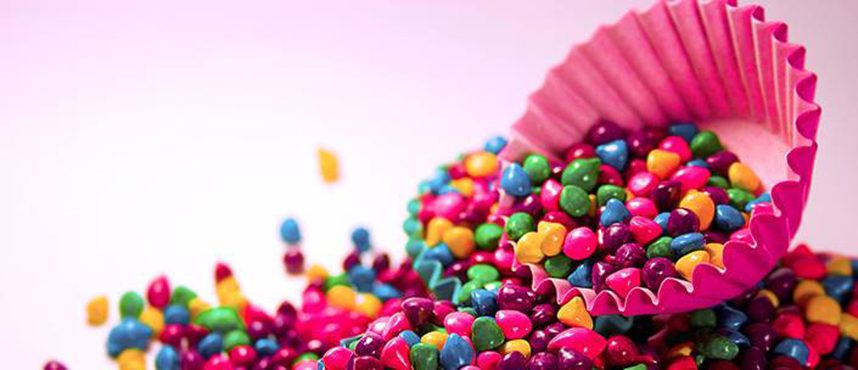Aluminium Lakes are produced by the adsorption of water soluble dye onto a hydrated aluminum substrate rendering the colour insoluble in water. The end product is coloured either by dispersion of the Lake into the product or by coating on to the surface of the product.
In general lakes are more stable than the corresponding water-soluble Colours, producing brighter more vivid colours.
A dye is a distinct chemical material, which exhibits colouring power or tinctorial strength when dissolved. A pigment generically is an insoluble material, which colours by dispersion. The lakes consist of a substratum of alumina hydrate on which the dye is absorbed or precipitated. Having aluminium hydroxide as the substrate, the lakes are insoluble in nearly all solvents.
Generally, regulations specify a minimum of 85% pure dye for the primary soluble dyes. Most lots will be in the range of 88-95% pure. The lakes, on the other hand, do not have specified minimum dye content and typically range from 8 to 44% pure dye in food lakes while some of the cosmetic lakes can go up to 70%.
Note, pure dye in Lakes in no way co-relates to the color value or colouring property/ability of the Lake. Since Lakes are pigments, their colouring is achieved through dispersion of tiny colour particles. The more finely ground the colour particles; the more effective a colour will be.
Since the colouring property of lakes is more dependent on the fineness of the lakes than the pure food dyes present, it is important to test the parameter of particle size before comparing prices. Greater fineness allows usage of lower dosage of colour in an end product, thus resulting in substantial savings in cost.
Lakes have multiple uses in food, cosmetic and pharmaceutical applications.


